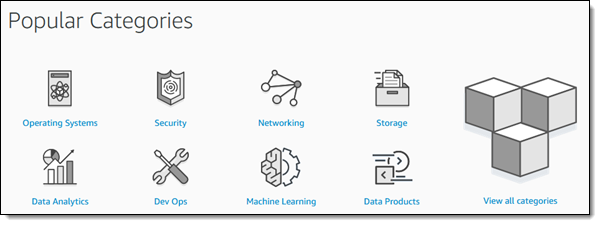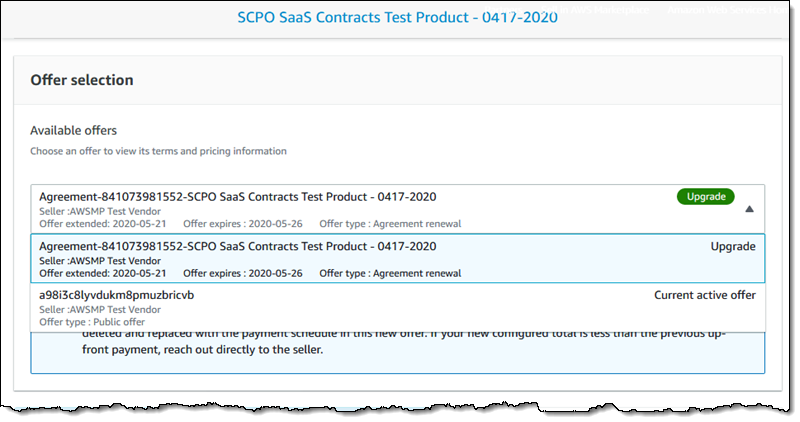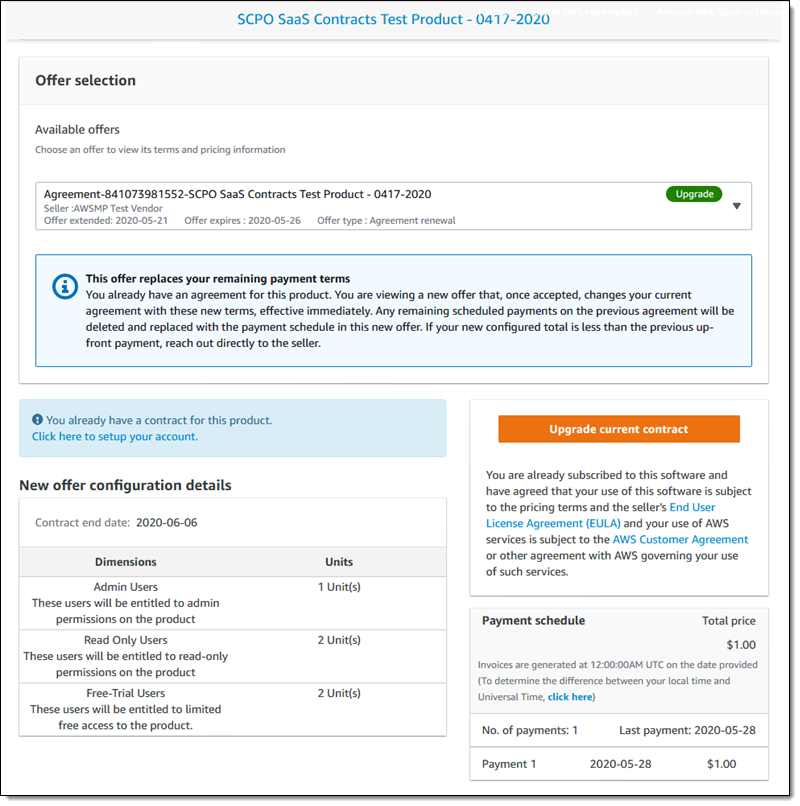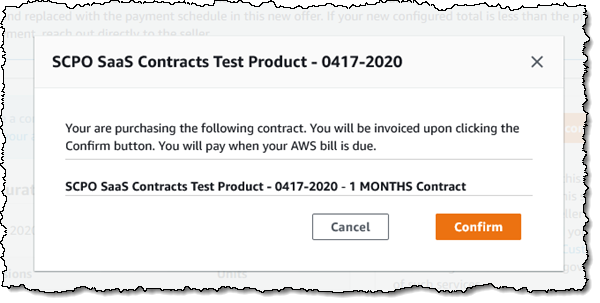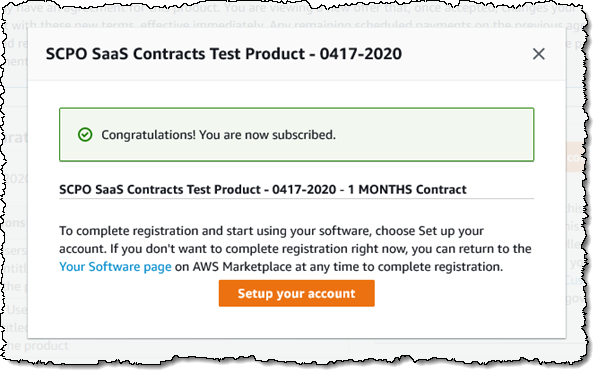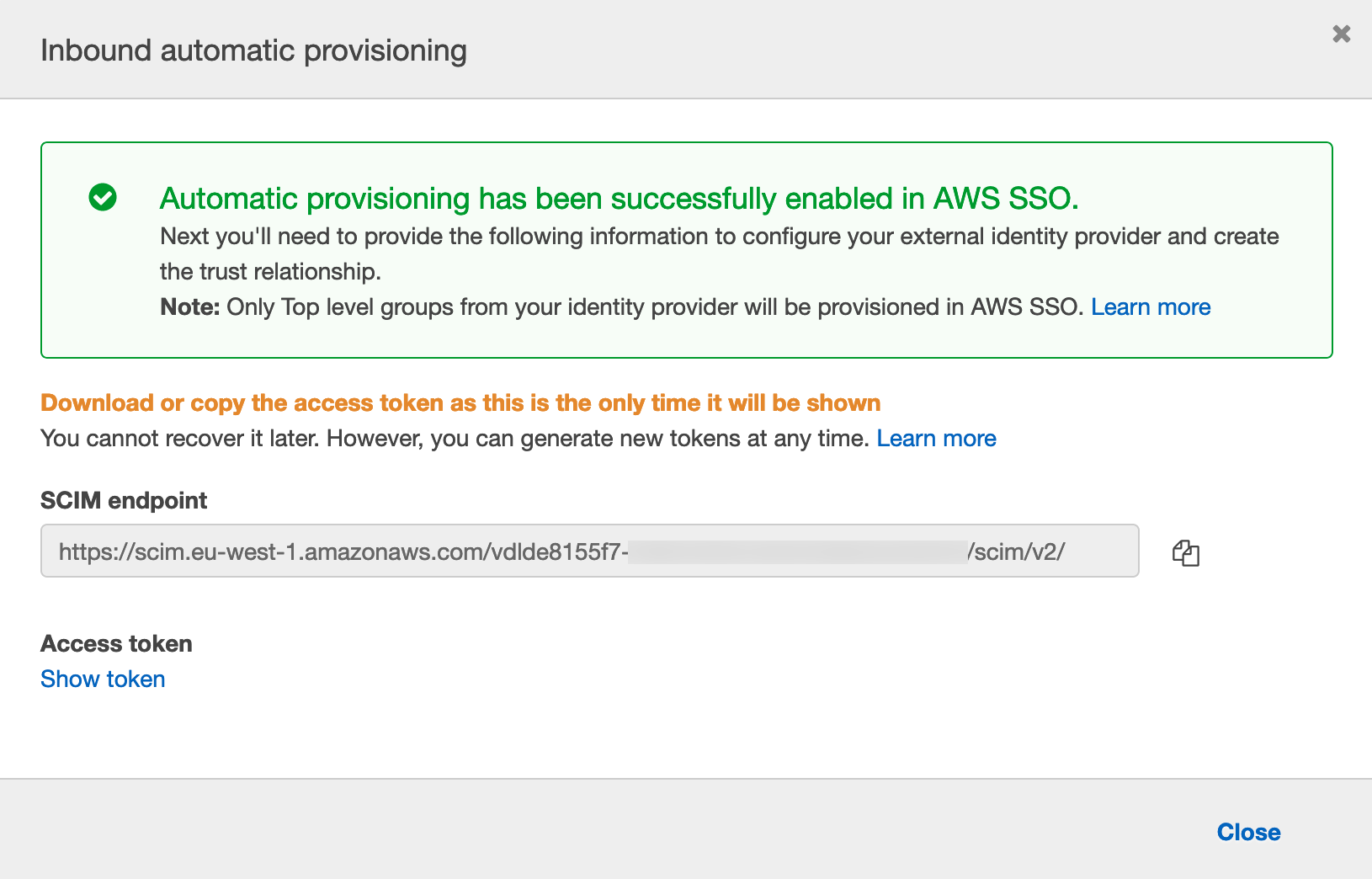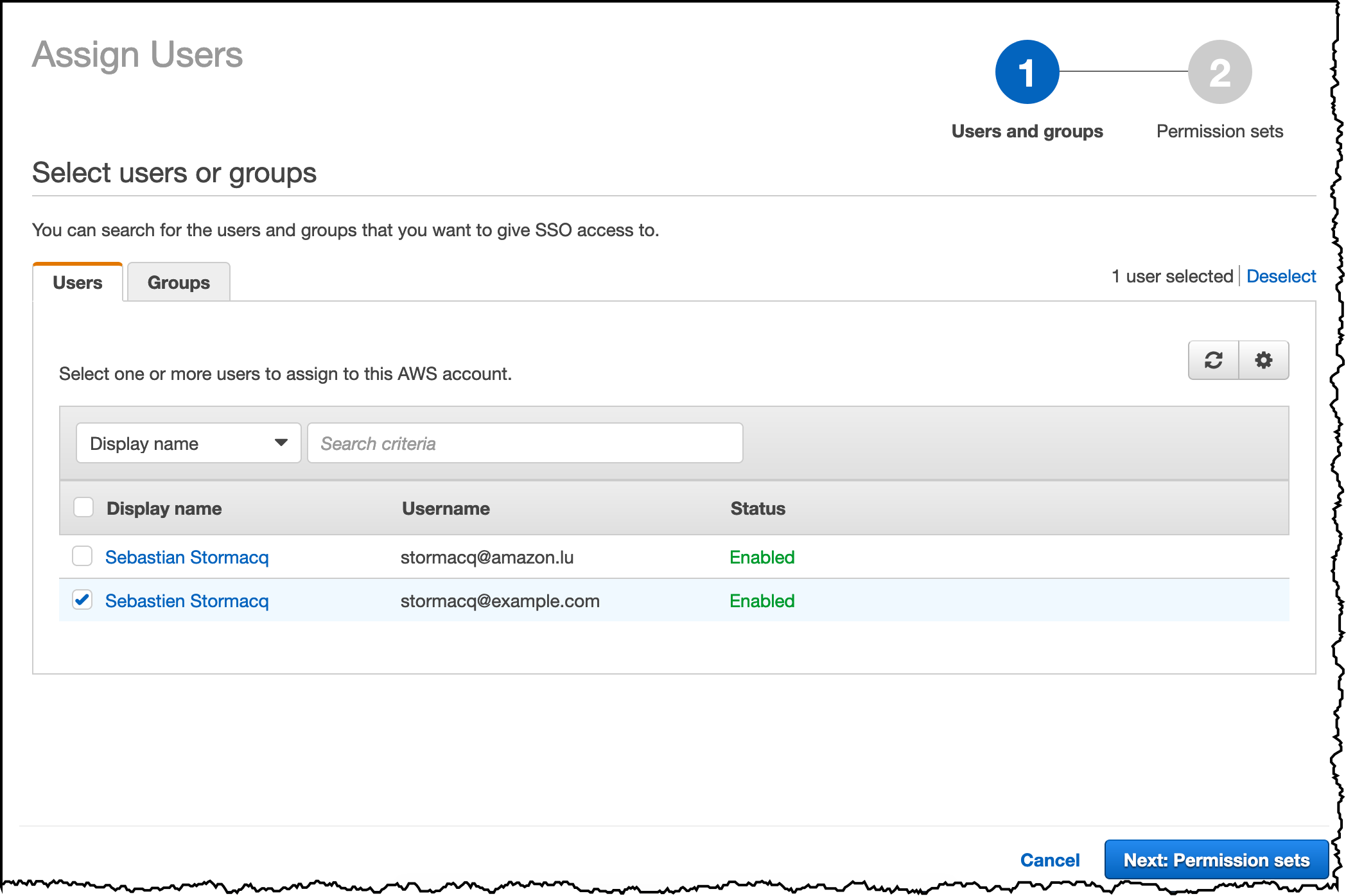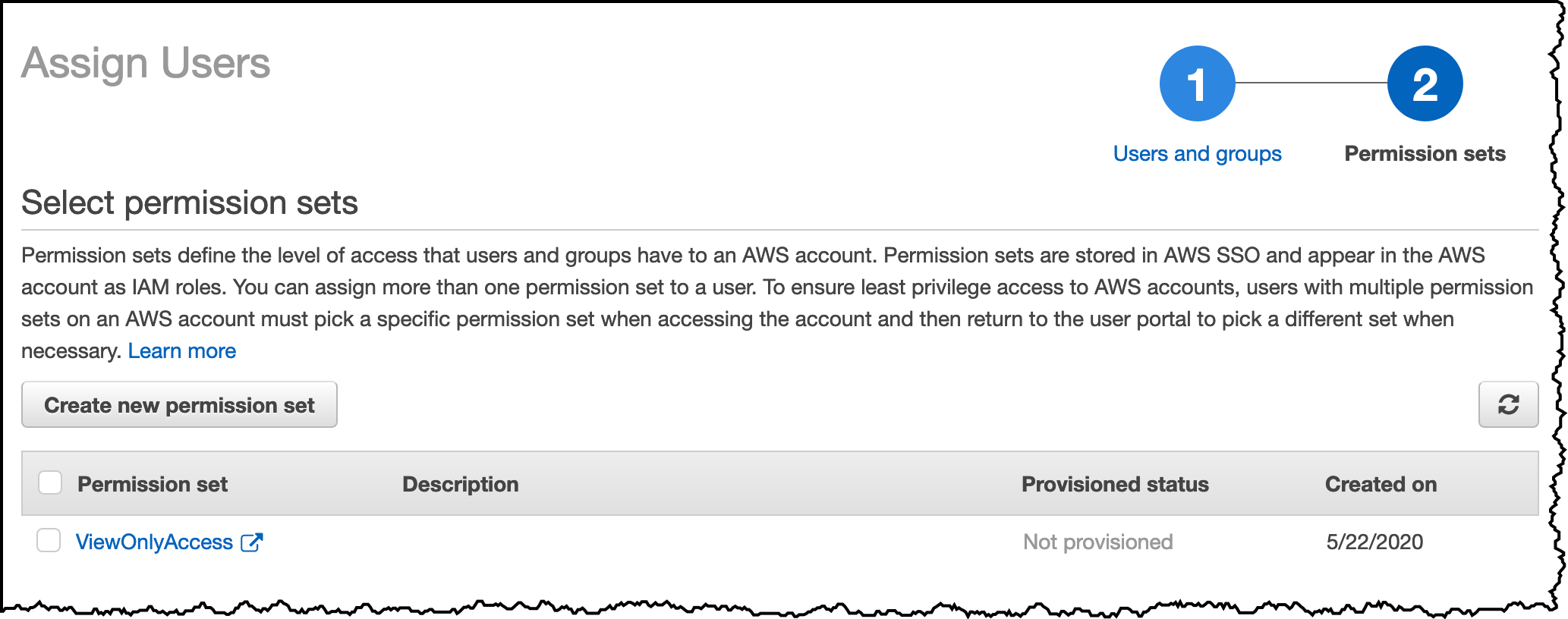Communities are now more important than ever. Member of local communities look to their leaders to provide guidance and mentorship on how to build AWS skills, solve technical problems, and grow their careers. Traditionally this AWS knowledge and community support is shared in many ways including via social media, blogs, open source projects, or by presenting at events or Meetups. More recently leaders are working to keep communities connected and supporting each other during challenging times.
The AWS Heroes program recognizes AWS enthusiasts who go above and beyond and have a wide-reaching impact in their community. Today, we are excited to introduce the newest AWS Heroes, including the first Heroes from South Africa and France:
Philippe Abdoulaye – Raleigh, USA
 Community Hero Philippe Abdoulaye is the founder of ITaaSNow, an AWS advisory consulting business specializing in how to leverage the cloud to boost business performance. His main goal is to advise companies on how to transform IT infrastructure and IT organizations using AWS. He developed two architecture frameworks to speed up AWS architecture design and implementation. They include The Complete ITaaS Delivery Model and The AWS Virtual Data Center (VDC). He has authored seven books and 100+ articles on AWS, DevOps, and digital transformation, and gives conference talks on how to use AWS to grow businesses.
Community Hero Philippe Abdoulaye is the founder of ITaaSNow, an AWS advisory consulting business specializing in how to leverage the cloud to boost business performance. His main goal is to advise companies on how to transform IT infrastructure and IT organizations using AWS. He developed two architecture frameworks to speed up AWS architecture design and implementation. They include The Complete ITaaS Delivery Model and The AWS Virtual Data Center (VDC). He has authored seven books and 100+ articles on AWS, DevOps, and digital transformation, and gives conference talks on how to use AWS to grow businesses.
Jayesh Ahire – Pune, India
 Machine Learning Hero Jayesh Ahire is an ML developer and researcher who enjoys working on distributed neural computers. He is also leader of the Pune AWS User Group, Pune Elasticsearch User Group, TensorFlow UG, and Twilio India Community. As an active advocate of AWS, Jayesh has delivered various talks around AWS AI Services, including Amazon SageMaker, at AWS Community Days and regular AWS meetups. He is an active blogger and has authored books on neural networks, reinforcement learning, blockchain, and simulation hypothesis.
Machine Learning Hero Jayesh Ahire is an ML developer and researcher who enjoys working on distributed neural computers. He is also leader of the Pune AWS User Group, Pune Elasticsearch User Group, TensorFlow UG, and Twilio India Community. As an active advocate of AWS, Jayesh has delivered various talks around AWS AI Services, including Amazon SageMaker, at AWS Community Days and regular AWS meetups. He is an active blogger and has authored books on neural networks, reinforcement learning, blockchain, and simulation hypothesis.
Parthasarathi Balasubramanian – Chennai, India
 Community Hero Parthasarathi (Partha) Balasubramanian is a Cloud Solution Architect at 8K Miles. He has been an AWS user since 2013, and he holds the AWS Certified Solution Architect Professional & Certified Security Specialty certifications. He founded the AWS User Group Chennai in 2018, which currently has 2800+ active members. He regularly organizes AWS User Group meetups as well as the the first-ever AWS Community Day Chennai 2019, which was a grand success with 450+ participants. Recently he started the AWS User Group India Facebook page for organizing live webinars, which has attracted 1100+ followers within just two months.
Community Hero Parthasarathi (Partha) Balasubramanian is a Cloud Solution Architect at 8K Miles. He has been an AWS user since 2013, and he holds the AWS Certified Solution Architect Professional & Certified Security Specialty certifications. He founded the AWS User Group Chennai in 2018, which currently has 2800+ active members. He regularly organizes AWS User Group meetups as well as the the first-ever AWS Community Day Chennai 2019, which was a grand success with 450+ participants. Recently he started the AWS User Group India Facebook page for organizing live webinars, which has attracted 1100+ followers within just two months.
Matthew Bonig – Denver, USA
 Data Hero Matthew Bonig is a consultant at Defiance Digital, specializing in the software development lifecycle and utilizing serverless technologies to increase productivity. He specializes in Amazon DynamoDB, AWS Cloud Development Kit, AWS API Gateway, and AWS Lambda and other technologies. Matthew spreads his knowledge to the data and larger tech communities through meetups in Denver and blog posts on his personal site. He even led a few official Amazon DynamoDB builder’s sessions at re:Invent 2019.
Data Hero Matthew Bonig is a consultant at Defiance Digital, specializing in the software development lifecycle and utilizing serverless technologies to increase productivity. He specializes in Amazon DynamoDB, AWS Cloud Development Kit, AWS API Gateway, and AWS Lambda and other technologies. Matthew spreads his knowledge to the data and larger tech communities through meetups in Denver and blog posts on his personal site. He even led a few official Amazon DynamoDB builder’s sessions at re:Invent 2019.
Veliswa Boya – Johannesburg, South Africa
 Community Hero Veliswa Boya is a 2x certified AWS Cloud Engineer currently working with application teams on Financial Services cloud migration strategies and cloud architecture designs. She is a member of the Indoni Developers, a platform for African women in coding/tech. She speaks at meetups and was one of the speakers at the inaugural AWS Community Day Cape Town in 2019. Veliswa enjoys speaking and connecting with those who are new to tech and specifically new to AWS. She mentors young people who are looking to embark on AWS certification journeys, shares her own experiences, and gives guidance and support. Veliswa also likes to write about “what she’s learned so far on AWS” and publishes on her Medium blog.
Community Hero Veliswa Boya is a 2x certified AWS Cloud Engineer currently working with application teams on Financial Services cloud migration strategies and cloud architecture designs. She is a member of the Indoni Developers, a platform for African women in coding/tech. She speaks at meetups and was one of the speakers at the inaugural AWS Community Day Cape Town in 2019. Veliswa enjoys speaking and connecting with those who are new to tech and specifically new to AWS. She mentors young people who are looking to embark on AWS certification journeys, shares her own experiences, and gives guidance and support. Veliswa also likes to write about “what she’s learned so far on AWS” and publishes on her Medium blog.
Andrew Brown – Toronto, Canada
 Community Hero Andrew Brown is the co-founder of ExamPro, a learning platform designed to help you pass AWS Certification exams. His AWS Certifications video courses are published for free with no ads on freeCodeCamp so that cloud knowledge is accessible to everyone. Andrew volunteers his time mentoring those looking to switch or start a career in the cloud industry. All you need to do is reach out and send him a message on LinkedIn. He’s also the AWS moderator and a top author for DEV. Andrew is active in the Toronto developer community, and you can meet him at AWS Toronto User Group events.
Community Hero Andrew Brown is the co-founder of ExamPro, a learning platform designed to help you pass AWS Certification exams. His AWS Certifications video courses are published for free with no ads on freeCodeCamp so that cloud knowledge is accessible to everyone. Andrew volunteers his time mentoring those looking to switch or start a career in the cloud industry. All you need to do is reach out and send him a message on LinkedIn. He’s also the AWS moderator and a top author for DEV. Andrew is active in the Toronto developer community, and you can meet him at AWS Toronto User Group events.
Kyuhyun Byun – Seoul, Korea
 Serverless Hero Kyuhyun Byun is a leader of the AWSKRUG Serverless Group and CircleCI Korea User Group. He is a Software Engineer at Danggeun Market and was previously CTO at Movilest. He is interested in Serverless Architecture using AWS Lambda and AWS Glue, and enjoys building real-time services and data pipelines with Go language. He is a Serverless specialist who gives speeches at various conferences, user groups, and hands-on labs.
Serverless Hero Kyuhyun Byun is a leader of the AWSKRUG Serverless Group and CircleCI Korea User Group. He is a Software Engineer at Danggeun Market and was previously CTO at Movilest. He is interested in Serverless Architecture using AWS Lambda and AWS Glue, and enjoys building real-time services and data pipelines with Go language. He is a Serverless specialist who gives speeches at various conferences, user groups, and hands-on labs.
Elliott Cordo – Berkeley Heights, USA
 Data Hero Elliott Cordo is a data engineering, data warehouse, information management, and technology innovation expert with a passion for helping transform data into powerful information. Elliott has built nearly a dozen cloud-native data platforms on AWS, ranging from data warehouses and data lakes to real-time activation platforms in companies ranging from small startups to large enterprises. In his current role, Elliott has built a complete data infrastructure leveraging AWS at Equinox Fitness, and most recently Equinox Media. These solutions have resulted in Equinox releasing open source tooling for AWS native data platforms, and led to publications in AWS and Equinox tech blogs and presentations at AWS re:Invent.
Data Hero Elliott Cordo is a data engineering, data warehouse, information management, and technology innovation expert with a passion for helping transform data into powerful information. Elliott has built nearly a dozen cloud-native data platforms on AWS, ranging from data warehouses and data lakes to real-time activation platforms in companies ranging from small startups to large enterprises. In his current role, Elliott has built a complete data infrastructure leveraging AWS at Equinox Fitness, and most recently Equinox Media. These solutions have resulted in Equinox releasing open source tooling for AWS native data platforms, and led to publications in AWS and Equinox tech blogs and presentations at AWS re:Invent.
Sandip Das – Kolkata, India
 Container Hero Sandip Das works as a Sr. Cloud Solutions Architect & DevOps Engineer for Gryphon Online Safety Inc. and a few other companies, where he is focused on developing cutting edge solutions using AWS. He develops, deploys, and manages containerized solutions on a daily basis using popular AWS containerization solutions ECS, EKS, and Fargate. Sandip finds blogging as a great way to share knowledge: He writes articles on Linkedin about AWS, Docker, Kubernetes, programming and more. He also creates video tutorials on his YouTube channel.
Container Hero Sandip Das works as a Sr. Cloud Solutions Architect & DevOps Engineer for Gryphon Online Safety Inc. and a few other companies, where he is focused on developing cutting edge solutions using AWS. He develops, deploys, and manages containerized solutions on a daily basis using popular AWS containerization solutions ECS, EKS, and Fargate. Sandip finds blogging as a great way to share knowledge: He writes articles on Linkedin about AWS, Docker, Kubernetes, programming and more. He also creates video tutorials on his YouTube channel.
Rustem Feyzkhanov – San Jose, USA
 Maching Learning Hero Rustem Feyzkhanov is a Machine Learning Engineer at Instrumental, where he creates analytical models for the manufacturing industry. He is passionate about the use of cloud infrastructure for AI/ML applications and is the author of the online courses “Practical Deep Learning on the Cloud” and “Serverless Deep Learning with TensorFlow and AWS Lambda.” He is also a creator of a few popular open-source repositories on GitHub about usage of AWS infrastructure for deep learning applications.
Maching Learning Hero Rustem Feyzkhanov is a Machine Learning Engineer at Instrumental, where he creates analytical models for the manufacturing industry. He is passionate about the use of cloud infrastructure for AI/ML applications and is the author of the online courses “Practical Deep Learning on the Cloud” and “Serverless Deep Learning with TensorFlow and AWS Lambda.” He is also a creator of a few popular open-source repositories on GitHub about usage of AWS infrastructure for deep learning applications.
Hiromi Ito – Osaka, Japan
 Community Hero Hiromi Ito is a Customer Marketing Manager at DigitalCube Co., Ltd. Since joining the Japanese AWS user group (JAWS-UG) in 2014, she has been actively involved in the creation of a women’s group in Japan, the overall running of JAWS-UG, and the community work of regional groups. In 2018, she was an organizer of JAWS DAYS 2018 and was named an AWS Samurai 2017. In 2019, she created the AWS Asian Women’s Association (Global Community) to host events and online meetups in the Asia region. She was selected as an AWS re:Invent Community Leader Diversity Grant recipient in 2019, and continues to expand AWS community activities to more of the world than ever before.
Community Hero Hiromi Ito is a Customer Marketing Manager at DigitalCube Co., Ltd. Since joining the Japanese AWS user group (JAWS-UG) in 2014, she has been actively involved in the creation of a women’s group in Japan, the overall running of JAWS-UG, and the community work of regional groups. In 2018, she was an organizer of JAWS DAYS 2018 and was named an AWS Samurai 2017. In 2019, she created the AWS Asian Women’s Association (Global Community) to host events and online meetups in the Asia region. She was selected as an AWS re:Invent Community Leader Diversity Grant recipient in 2019, and continues to expand AWS community activities to more of the world than ever before.
Zamira Jaupaj – Amsterdam, The Netherlands
 Community Hero Zamira Jaupaj is a Solution Architect at Mobiquity, implementing AWS solutions and helping customers with their digital transformation. She has more than 6 years of experience implementing critical and complex AWS solutions with containers, serverless, and data analytics for small and enterprise companies. Zamira is the founder of AWS Meetup Albania and co-organizer of AWS Meetup Netherlands, coordinating several meetups with international speakers on a variety of topics. She also regularly speaks at technical conferences and authors tech blogs, sharing best practices about her AWS experiences on Medium.
Community Hero Zamira Jaupaj is a Solution Architect at Mobiquity, implementing AWS solutions and helping customers with their digital transformation. She has more than 6 years of experience implementing critical and complex AWS solutions with containers, serverless, and data analytics for small and enterprise companies. Zamira is the founder of AWS Meetup Albania and co-organizer of AWS Meetup Netherlands, coordinating several meetups with international speakers on a variety of topics. She also regularly speaks at technical conferences and authors tech blogs, sharing best practices about her AWS experiences on Medium.
Heewon Jeon – Seoul, Korea
 Machine Learning Hero Heewon Jeon is an applied scientist at SK Telecom. He enjoys developing NLP open source projects as a hobby, and one of his activities is contributing to GluonNLP as a member of the Distributed (Deep) Machine Learning Community, or DMLC. He likes to use MXNet as his main deep learning platform because of the efficiency of training. Recently, he successfully trained Korean GPT2 (KoGPT2) with hundreds of millions of sentences on multiple machines in partnership with AWS internal teams. He is also an author on the MXNet and the AWS Korea blog, and has written numerous articles on model training and distribution.
Machine Learning Hero Heewon Jeon is an applied scientist at SK Telecom. He enjoys developing NLP open source projects as a hobby, and one of his activities is contributing to GluonNLP as a member of the Distributed (Deep) Machine Learning Community, or DMLC. He likes to use MXNet as his main deep learning platform because of the efficiency of training. Recently, he successfully trained Korean GPT2 (KoGPT2) with hundreds of millions of sentences on multiple machines in partnership with AWS internal teams. He is also an author on the MXNet and the AWS Korea blog, and has written numerous articles on model training and distribution.
Hyunmin Kim – Seoul, Korea
 Community Hero Hyunmin Kim is a manager in Megazone Cloud’s Commercial Technology Center Solutions Architect team. Over the past three years, he has been working with many customers to develop experiences with AWS. The AWS community in Gangnam is growing rapidly, and is learning Kubernetes and Docker orchestration services like Docker and ECS and EKS together. Hyunmin helps organize the AWSKRUG Gangnam as well as the AWSKRUG Container Group, where he frequently presents on various topics.
Community Hero Hyunmin Kim is a manager in Megazone Cloud’s Commercial Technology Center Solutions Architect team. Over the past three years, he has been working with many customers to develop experiences with AWS. The AWS community in Gangnam is growing rapidly, and is learning Kubernetes and Docker orchestration services like Docker and ECS and EKS together. Hyunmin helps organize the AWSKRUG Gangnam as well as the AWSKRUG Container Group, where he frequently presents on various topics.
Pascal Martin – Lyon, France
 Container Hero Pascal Martin is DevOps Lead at Bedrock, where he has helped move an entire video streaming platform to AWS, running applications in containers on Kubernetes. He now focuses on scalability, resiliency, and cost efficiency, still leveraging Kubernetes and its ecosystem, managed services and serverless. He loves sharing his knowledge and experience and sometimes writes on his blog. The past few years, he has spoken about resiliency, Kubernetes, and the cloud at several meetups and conferences, including AWS Summit Paris, MixIT Lyon, and Forum PHP.
Container Hero Pascal Martin is DevOps Lead at Bedrock, where he has helped move an entire video streaming platform to AWS, running applications in containers on Kubernetes. He now focuses on scalability, resiliency, and cost efficiency, still leveraging Kubernetes and its ecosystem, managed services and serverless. He loves sharing his knowledge and experience and sometimes writes on his blog. The past few years, he has spoken about resiliency, Kubernetes, and the cloud at several meetups and conferences, including AWS Summit Paris, MixIT Lyon, and Forum PHP.
Kohei Matsushita – Tokyo, Japan
 IoT Hero Kohei Matsushita is a technology evangelist at SORACOM. He delivers over 140 seminars and training sessions throughout Japan each year, and also publishes videos, blogs, and books on IoT technology, which are widely referenced in the IoT industry. From low-power wireless devices such as Raspberry Pi and the SORACOM LTE-M Button, to cloud integration with AWS IoT Core and other managed services, he is deeply versed in a wide variety of IoT architectures. He also actively participates in the Japan AWS (JAWS) User Group.
IoT Hero Kohei Matsushita is a technology evangelist at SORACOM. He delivers over 140 seminars and training sessions throughout Japan each year, and also publishes videos, blogs, and books on IoT technology, which are widely referenced in the IoT industry. From low-power wireless devices such as Raspberry Pi and the SORACOM LTE-M Button, to cloud integration with AWS IoT Core and other managed services, he is deeply versed in a wide variety of IoT architectures. He also actively participates in the Japan AWS (JAWS) User Group.
Serkan Özal – Istanbul, Turkey
 Serverless Hero Serkan Özal is the CTO and founder of Thundra, a serverless centric application debugging, monitoring, and security solution. He mainly works on serverless architectures, distributed systems, and monitoring tools. Serkan publishes some of his work as open source tools and libraries on his GitHub account to be used and contributed by others for years. Serkan regularly writes technical blog posts both on his Medium account and the Thundra blog. In addition to his responsibilities in Thundra, he speaks at international conferences and moderates serverless workshops.
Serverless Hero Serkan Özal is the CTO and founder of Thundra, a serverless centric application debugging, monitoring, and security solution. He mainly works on serverless architectures, distributed systems, and monitoring tools. Serkan publishes some of his work as open source tools and libraries on his GitHub account to be used and contributed by others for years. Serkan regularly writes technical blog posts both on his Medium account and the Thundra blog. In addition to his responsibilities in Thundra, he speaks at international conferences and moderates serverless workshops.
Jayaraman Palaniappan – Orange County, USA
 Data Hero Jayaraman Palaniappan is the Head of Cloud Practice at Agilisium, focusing on AWS Big Data Technologies. For the past 7 years, he has mainly been involved in building Data Analytics Solutions using AWS Services for customers. Jayaraman helps conduct webinars, immersion days, and community days to evangelize Data Analytics & Big Data Services (EMR, Redshift, Kinesis, S3, & Glue) both within his organization and outside.
Data Hero Jayaraman Palaniappan is the Head of Cloud Practice at Agilisium, focusing on AWS Big Data Technologies. For the past 7 years, he has mainly been involved in building Data Analytics Solutions using AWS Services for customers. Jayaraman helps conduct webinars, immersion days, and community days to evangelize Data Analytics & Big Data Services (EMR, Redshift, Kinesis, S3, & Glue) both within his organization and outside.
Marcelo Palladino – São Paulo, Brazil
 Community Hero Marcelo Palladino is a Senior Software Engineer at Hi Platform, delivering cloud-based systems to help millions of customers every month. He has more than two decades of IT experience and holds six AWS certifications. Marcelo is a co-organizer of the AWS User Group São Paulo, AWS Community Day Brazil, and public speaker. He firmly believes that knowledge-sharing has a real impact within the community and is a great way to learn new things, help society, and help his country.
Community Hero Marcelo Palladino is a Senior Software Engineer at Hi Platform, delivering cloud-based systems to help millions of customers every month. He has more than two decades of IT experience and holds six AWS certifications. Marcelo is a co-organizer of the AWS User Group São Paulo, AWS Community Day Brazil, and public speaker. He firmly believes that knowledge-sharing has a real impact within the community and is a great way to learn new things, help society, and help his country.
Rajarajan Pudupatti – Newport, USA
 Container Hero Rajarajan Pudupatti is a Director of Cloud Platform architecture at Fidelity Investments, where he drives the engineering behind building next-gen model based cloud native platforms on AmazonEKS for running mission critical enterprise production workloads. Rajarajan is a #GitOps enthusiast and last year he spoke at Kubecon 2019 on building enterprise grade cloud platforms on AWS. He has also played instrumental roles in helping open source projects like eksctl and AWS Ingress controller meet enterprise standards, and making them production grade.
Container Hero Rajarajan Pudupatti is a Director of Cloud Platform architecture at Fidelity Investments, where he drives the engineering behind building next-gen model based cloud native platforms on AmazonEKS for running mission critical enterprise production workloads. Rajarajan is a #GitOps enthusiast and last year he spoke at Kubecon 2019 on building enterprise grade cloud platforms on AWS. He has also played instrumental roles in helping open source projects like eksctl and AWS Ingress controller meet enterprise standards, and making them production grade.
Cosmin Sanda – Copenhagen, Denmark
 Machine Learning Hero Cosmin Sanda combines data engineering with data science to deliver end-to-end products that are scalable and resilient. He designs and implements both batch and real-time Big Data pipelines that transform and enhance data assets. Cosmin is adding value to the ML community by writing tutorials that explain best practices, data manipulations, and steps required to deliver real-life working applications. He also contributes to open source, provides support, and runs the Copenhagen Apache MXNet meetup group.
Machine Learning Hero Cosmin Sanda combines data engineering with data science to deliver end-to-end products that are scalable and resilient. He designs and implements both batch and real-time Big Data pipelines that transform and enhance data assets. Cosmin is adding value to the ML community by writing tutorials that explain best practices, data manipulations, and steps required to deliver real-life working applications. He also contributes to open source, provides support, and runs the Copenhagen Apache MXNet meetup group.
Bruce Sun – Hangzhou, China
 Community Hero Bruce Sun is the hybrid cloud team leader of NetEase Games. Bruce dived deep into many AWS network services such as VPC, Direct Connect, and Global Accelerator to design their complex hybrid network architecture for serving their global gaming services. He also took lead to the AWS Nitro System and ARM-Based AWS Graviton Processors performance benchmark test which helped them innovate faster in a cost-effective way. Bruce introduced their use case of EC2 A1 Graviton in AWS re:Invent 2019. He also participated in AWS Game Tech Day Events in China to share best practices on AWS.
Community Hero Bruce Sun is the hybrid cloud team leader of NetEase Games. Bruce dived deep into many AWS network services such as VPC, Direct Connect, and Global Accelerator to design their complex hybrid network architecture for serving their global gaming services. He also took lead to the AWS Nitro System and ARM-Based AWS Graviton Processors performance benchmark test which helped them innovate faster in a cost-effective way. Bruce introduced their use case of EC2 A1 Graviton in AWS re:Invent 2019. He also participated in AWS Game Tech Day Events in China to share best practices on AWS.
Amy Tseng – Washington D.C., USA
 Data Hero Amy Tseng is a data engineering manager at Fannie Mae, specializing in data warehousing and data analytics. She presents at local meet-ups for Women in Technology to encourage more women to enter big data technology. She presented a session on Data Warehouse Migration at AWS re:Invent 2019 and a session on Implementing Hybrid Data Warehouses at the AWS Public Sector Summit in 2019. Amy is passionate about exploring new technologies and works closely with AWS product teams to keep exploring new features and enhancements for the services she uses. She encourages her team to think outside of the box and continue to innovate using these emerging technologies.
Data Hero Amy Tseng is a data engineering manager at Fannie Mae, specializing in data warehousing and data analytics. She presents at local meet-ups for Women in Technology to encourage more women to enter big data technology. She presented a session on Data Warehouse Migration at AWS re:Invent 2019 and a session on Implementing Hybrid Data Warehouses at the AWS Public Sector Summit in 2019. Amy is passionate about exploring new technologies and works closely with AWS product teams to keep exploring new features and enhancements for the services she uses. She encourages her team to think outside of the box and continue to innovate using these emerging technologies.
Rehan van der Merwe – Pretoria, South Africa
 Community Hero Rehan van der Merwe is a developer, architect and AWS junkie at heart while consuming an unhealthy amount of coffee, focusing on Serverless and all that AWS has to offer. He organizes the AWS PTA Meetup and does the occasional presentation as well. He is an avid blogger and is helping the AWS community where possible, always lurking in all the #aws slack channels and answering questions. He currently holds 3 AWS certifications and is passionate about serverless and architecting big data and microservices.
Community Hero Rehan van der Merwe is a developer, architect and AWS junkie at heart while consuming an unhealthy amount of coffee, focusing on Serverless and all that AWS has to offer. He organizes the AWS PTA Meetup and does the occasional presentation as well. He is an avid blogger and is helping the AWS community where possible, always lurking in all the #aws slack channels and answering questions. He currently holds 3 AWS certifications and is passionate about serverless and architecting big data and microservices.
Artem Yushev – Munich, Germany
 IoT Hero Artem Yushev is a Staff Application Engineer at Infineon’s Digital Security Solutions division. In his role he evangelizes Open Source Software within his company and outside it. He is passionate about embedded security in general and its application for IoT in particular. His contributions focus on FreeRTOS and hardware security usage in FreeRTOS and with AWS IoT, focusing on making security practices easy to understand for broad audience, thus making them a requirement for any IoT device.
IoT Hero Artem Yushev is a Staff Application Engineer at Infineon’s Digital Security Solutions division. In his role he evangelizes Open Source Software within his company and outside it. He is passionate about embedded security in general and its application for IoT in particular. His contributions focus on FreeRTOS and hardware security usage in FreeRTOS and with AWS IoT, focusing on making security practices easy to understand for broad audience, thus making them a requirement for any IoT device.
Learn more about the newest AWS Heroes and connect with a Hero near you by visiting the AWS Hero website.
— Ross;
Via AWS News Blog https://ift.tt/1EusYcK
